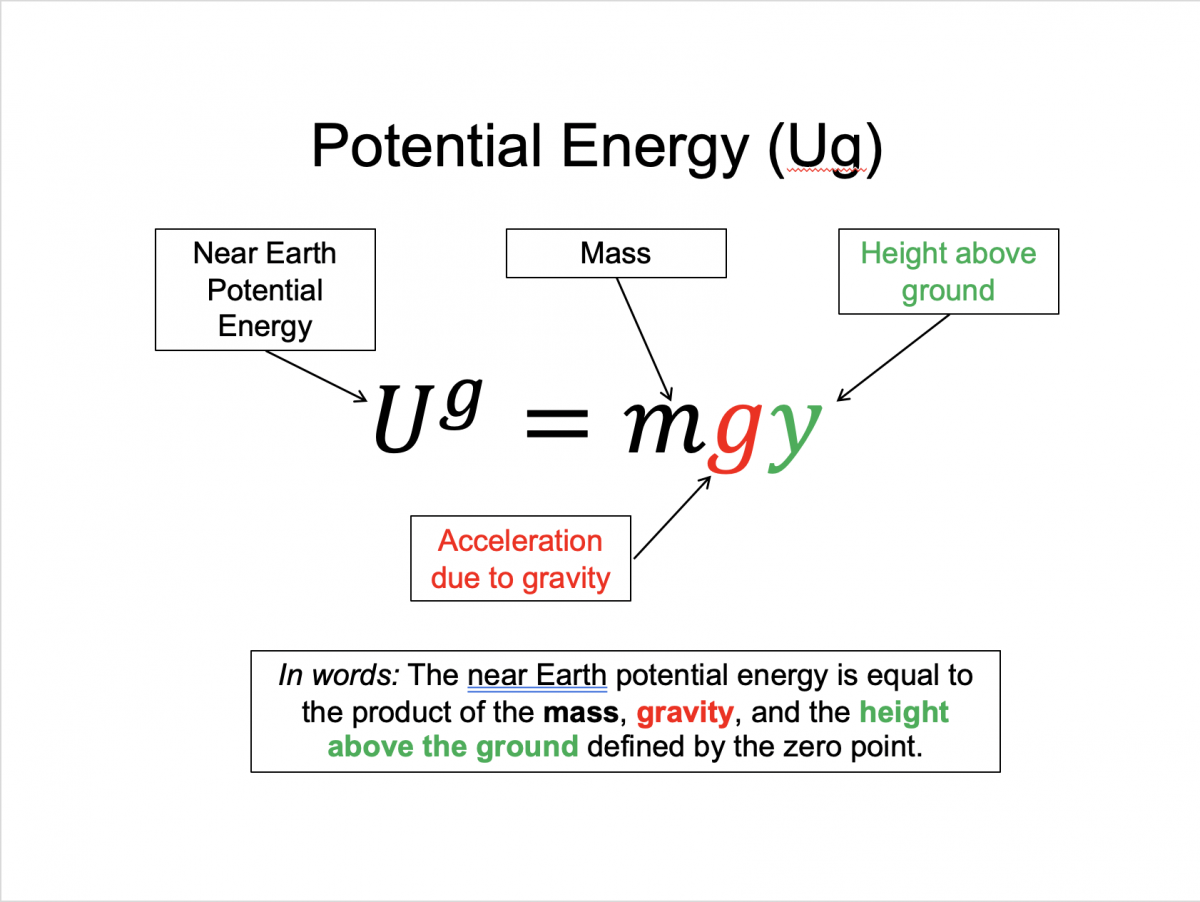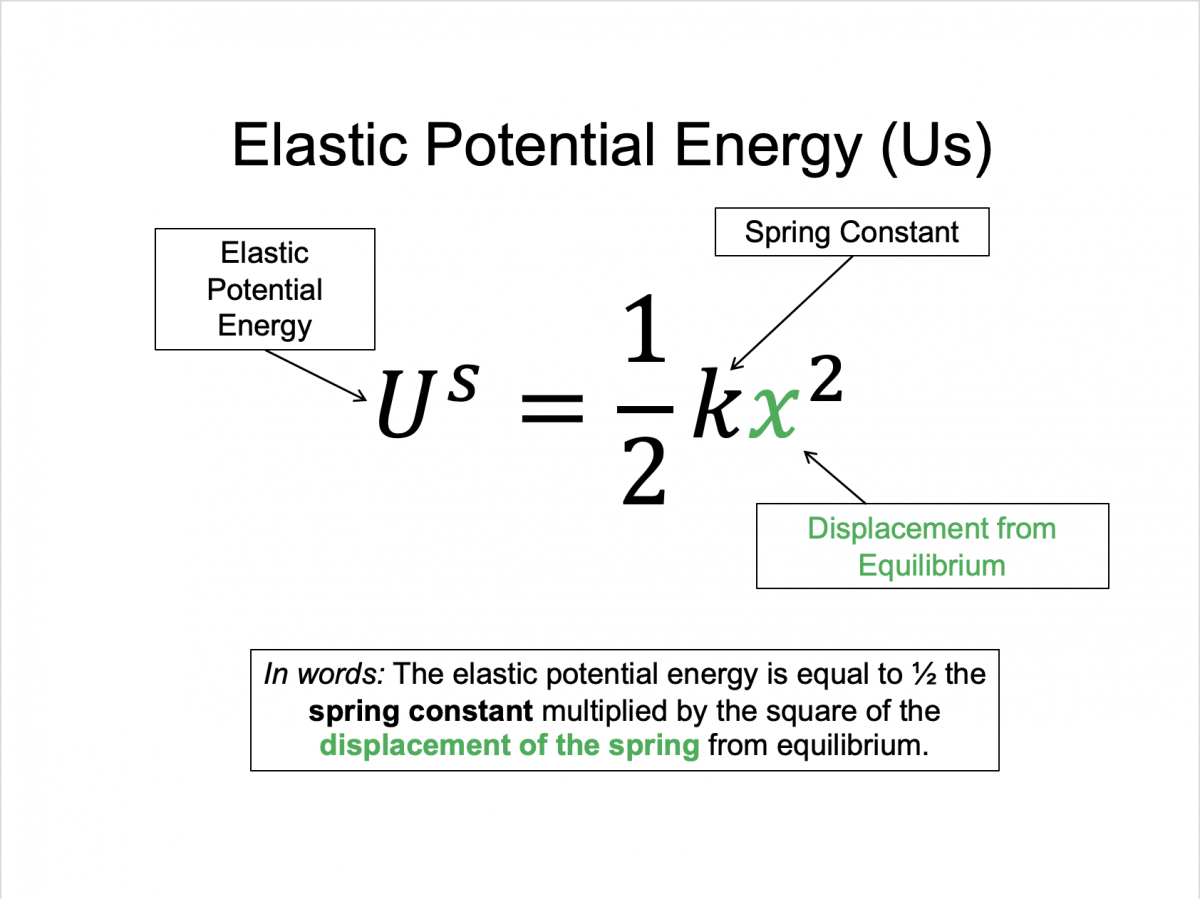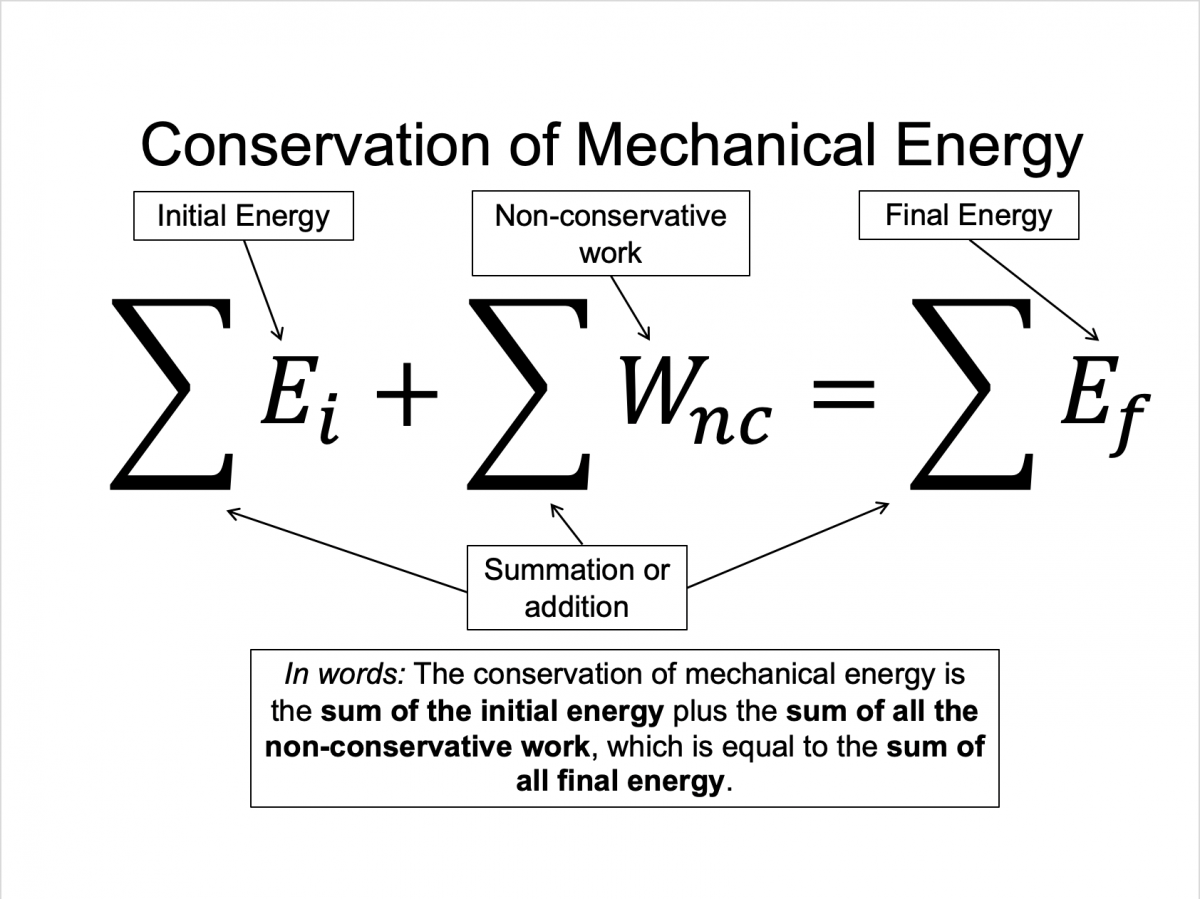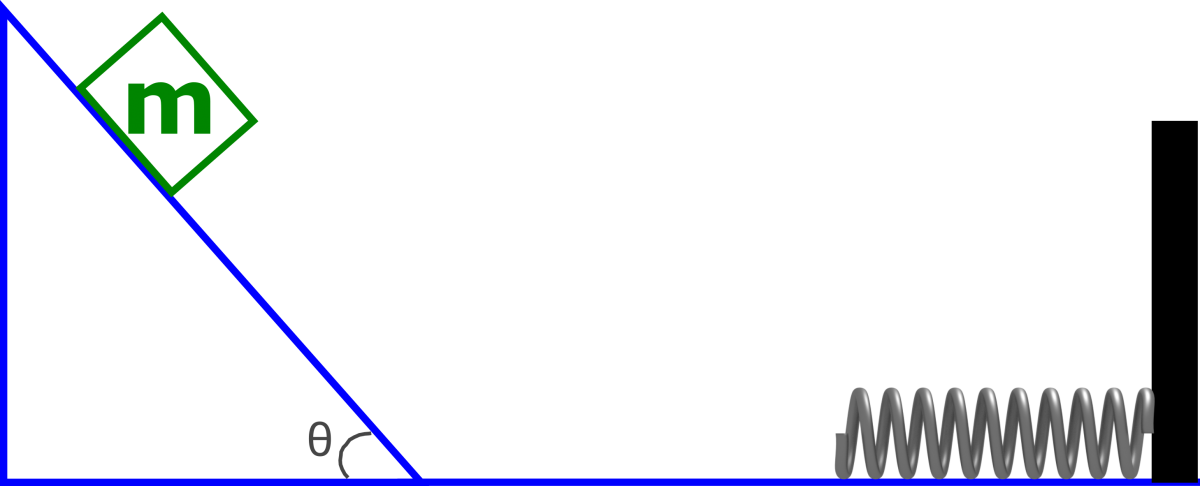Check out the OpenStax trailer to learn about the interplay between kinetic and potential energy.
Pre-lecture Study Resources
Read the BoxSand Introduction and watch the pre-lecture videos before doing the pre-lecture homework or attending class. If you have time, or would like more preparation, please read the OpenStax textbook and/or try the fundamental examples provided below.
BoxSand Introduction
Conservation of Energy | Conservation of Energy Application
Key Equations and Infographics




Now, take a look at the pre-lecture reading and videos below.
BoxSand Videos
Required Videos
Suggested Supplemental Videos
OpenStax Reading
Fundamental examples
1. A $5 \, kg$ object starts from rest and slides down a frictionless incline as shown in the image below. If the angle shown in the image is $30^{\circ}$, and the object was initially $7 \, m$ up the incline (measured along the incline), what is the velocity of the object at the bottom of the incline?

2. A $7 \, kg$ object starts from rest and slides down a frictionless incline as shown in the image below. All surfaces are frictionless and the spring has a spring constant of $1900 \, N/m$. If the angle shown in the image is $40^{\circ}$, and the object was initially $7 \, m$ up the incline (measured along the incline), what is the maximum compression of the spring?

3. A $7 \, kg$ object starts from rest and slides down a frictionless incline as shown in the image below. The object then encounters the level ground where the coefficient of kinetic friction between the two surfaces is known to be $\mu_k = 0.20$. If the angle shown is $\theta = 20^{\circ}$, how far does the object travel from the base of the incline before coming to rest? The object was initially $7 \, m$ up the incline (measured along the incline).

CLICK HERE for solutions.
Short foundation building questions, often used as clicker questions, can be found in the clicker questions repository for this subject.
Post-Lecture Study Resources
Use the supplemental resources below to support your post-lecture study.
Practice Problems
Recommended example practice problems
BoxSand's Quantitative Practice Problems
BoxSand's Multiple Select Problems
Set 1:Multiple choice problems 25,26 PDF
Set 2: UoW-Greenbay: Stopping distance of a roller coaster, Ball Launched with spring,
Set 3: Physics.info set for Conservation of Energy, Website
For additional practice problems and worked examples, visit the link below. If you've found example problems that you've used please help us out and submit them to the student contributed content section.
Additional Boxsand Study Resources
Additional BoxSand Study Resources
Learning Objectives
Summary
The work energy theorem, combined with knowledge of potential energy functions, allows for the construction of the final form of the conservation energy equation. The goal is to apply the conservation of energy equation to various systems and understand the transformational nature of energy.
Atomistic Goals
Students will be able to...
- Define a system and identify internal and external objects, forces, and work.
- Show that conservative forces yield work that is independent of the path taken.
- Identify conservative and non-conservative forces and work.
- (UPMF) Use the independence of path for conservative work to create a function of position to account for conservative work. We call that
- function a potential energy function for all internal conservative work.
- Construct the final form of the work-energy theorem using the concept of potential energy.
- Show that energy is conserved for systems where the net external work is zero.
- Show that application of an energy analysis involves bookkeeping an initial and final state of the system.
- Use the gravitational potential energy function, for near Earth objects, in an energy analysis.
- Use the spring potential energy function for Hooke's law springs in an energy analysis.
- Construct the graphical representation depicting the kinetic, potential, thermal, and total energy as a function of position.
- (UPMF) When non-conservative work is internal to a system, there is a form of energy associated with that work and it is not called potential energy. E.g. work done by friction converting macroscopic kinetic energy to microscopic kinetic energy (aka thermal energy)
- Identify other forms of energy such as thermal, chemical potential, electric potential, sound, light, … etc.
- Identify energy transformations within a system and energy transfers into/out of a system.
- Apply a conservation of energy equation for a system from its initial to final state.
- Apply conservation of energy to system with multiple internal objects.
- Define elastic collisions and apply a conservation of energy and momentum analysis to the collision.
- Define inelastic collisions and apply a conservation of energy and momentum analysis to the collision.
- Derive the relationship between kinetic energy and momentum.
YouTube Videos
Simulations
You may have seen this skate park simulation before. Make sure to turn on either the bar chart or pie chart to see how energy is either conserved or turned into thermal energy (if friction is turned on).
For additional simulations on this subject, visit the simulations repository.
Demos
History
Oh no, we haven't been able to write up a history overview for this topic. If you'd like to contribute, contact the director of BoxSand, KC Walsh (walshke@oregonstate.edu).
Physics Fun
Oh no, we haven't been able to post any fun stuff for this topic yet. If you have any fun physics videos or webpages for this topic, send them to the director of BoxSand, KC Walsh (walshke@oregonstate.edu).
Other Resources
This link provides analysis of a few examples for which energy is conserved.
This link is a thorough summary of conservation of energy and how it relates kinetic and potential energy.
A couple more examples of conservation of energy applied.
Other Resources
This link will take you to the repository of other content related resources.
Problem Solving Guide
Use the Tips and Tricks below to support your post-lecture study.
Assumptions
Checklist
Misconceptions & Mistakes
Pro Tips
Multiple Representations
Multiple Representations is the concept that a physical phenomena can be expressed in different ways.
Physical
Mathematical
Graphical
Descriptive
Experimental